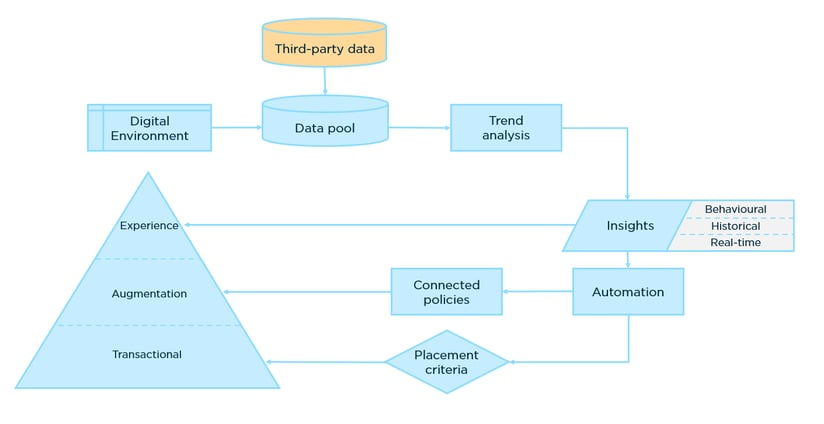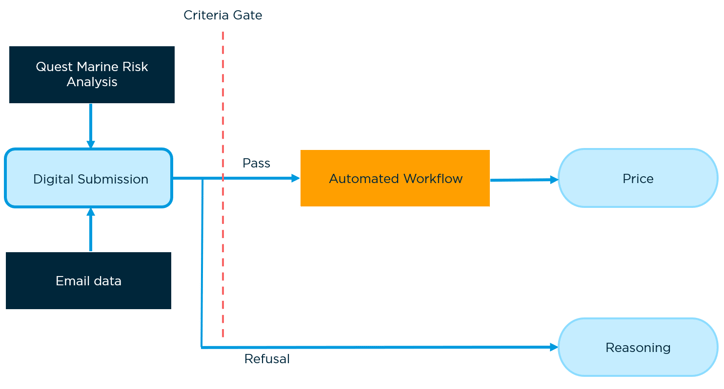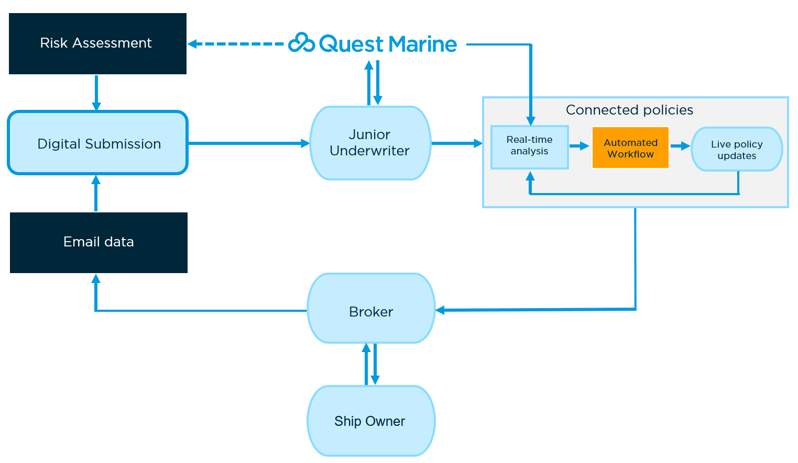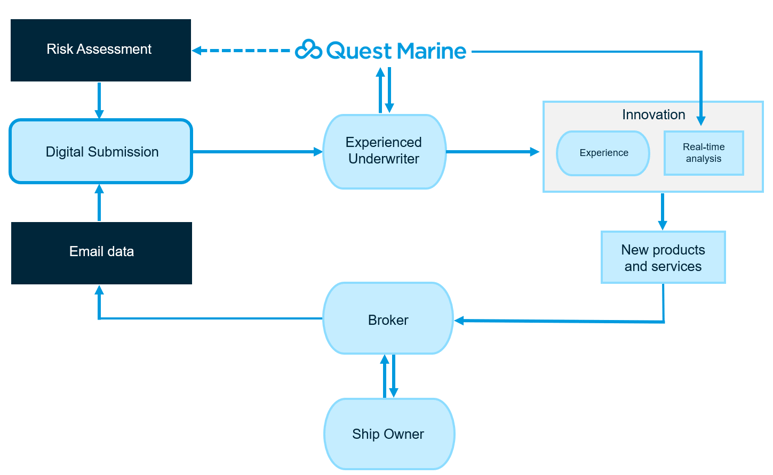The process of submissions can lead to a fully automated workflow, or be assigned to an Underwriter for consideration. We can see how effective digital submissions can be in several scenarios by looking at the way big data and analytics will change placement within the marine insurance market. With the added capabilities of a digital analytics platform such as Quest Marine, insight, automation, and monitoring technologies will lead to a predominantly three-tiered approach.
 Fig 1: The adoption of a digital environment and its impact on placement, leading to a tiered approach
Fig 1: The adoption of a digital environment and its impact on placement, leading to a tiered approach
As digital platforms become more of a priority for insurers looking to adapt to a changing marketplace, insight and understanding becomes democratised throughout the organisation. Algorithms distil the large volume of data for models to draw insight. Automation therefore makes information manageable so Underwriters can focus on complex tasks. Simple transactions can be fully automated, whilst those that have more bespoke characteristics move to becoming augmented through technology, such as connected policies. Those most complex risks see underwriters leveraging insight and experience to innovate around specific needs.
With the growing number of digital submissions seen in todays marketplace, it makes sense to take the same approach and apply automation to the ingestion of information. To truly provide value however, data shouldn’t just be ingested. The relative analytics an underwriter would carry out should be applied at the point of ingestion so that an Underwriter can draw a holistic view of business in one view. Doing so makes triaging business far more efficient and gives Underwriters the freedom to explore targeted areas of risk as they desire. It also provides the point of entry for a fully automated workflow for transactional business. Quest Marine’s submissions module draws on Quest Marine’s wider analytics and risk assessment capabilities to deliver an immediate understanding of risk. Depending on that understanding, it will filter through to either tier of the placement pyramid.
Submissions and transactional business
Automating a digital segment of a portfolio can deliver significant operational benefits. To automate transactional business efficiently, incoming information needs to be referenced before moving through a workflow (much like a soft credit check before applying for finance). With this in place, a set of controls around criteria can be set so that only business of a certain quality can pass through an automated pipeline. This set of variables remains consistent with those seen at all levels of an organisation or department using Quest Marine. All variables can not only be controlled by an Underwriter but will be fully understood as they are encountered in daily business decisions. A measure of whether to dial up or down on certain types of business can therefore be made in good judgement.

Fig 2: Example workflow of digital submission to automated placement
Submissions and augmented business
Business that has bespoke, but not complex, needs moves into a bracket where an Underwriter will need to review the unique characteristics of risk and cater to set needs. Here an Underwriter can triage criteria in line with their own judgement, and any instructions from the Chief Underwriter. This is particularly useful for a Junior Underwriter looking to train up or earn more experience considering transactional business is being automated. As the market evolves a common conception is that those learning the trade won’t be able to learn as much by osmosis. Access to a highly detailed system of triaging business allows the more junior staff to target which areas of risk most affect the account, the organisations appetite and how terms can change given such risk through connected technologies. This level of submission can lead to connected policies which leverage technology to automatically adjust terms in line with customer needs.

Fig 3: Example workflow of digital submission to connected policy
Submissions and experience applied to complex risk
The automated application of analytics allows for highly complex business to be identified early and escalated to those with sufficient experience in triaging such claims. The relative risk indicated by the submission will not only identify where the Underwriter can focus their efforts, but also co-ordinate with others in the treatment of risk to innovate and cater for unique needs. Getting hands on with such risk early on will put experienced Underwriters in a position to respond to Brokers ahead of other Underwriters, increasing the possibility of winning business that has been submitted to multiple recipients.

Fig 4: Example workflow of digital submission to in-house innovation
Learn more about digital submissions management in marine insurance here.
Get in touch if you want to see how our submissions module can help your business.

Powering the future of insurance
If you want to book a 1-1 meeting with us then let us know by clicking the link below.
Book a meeting